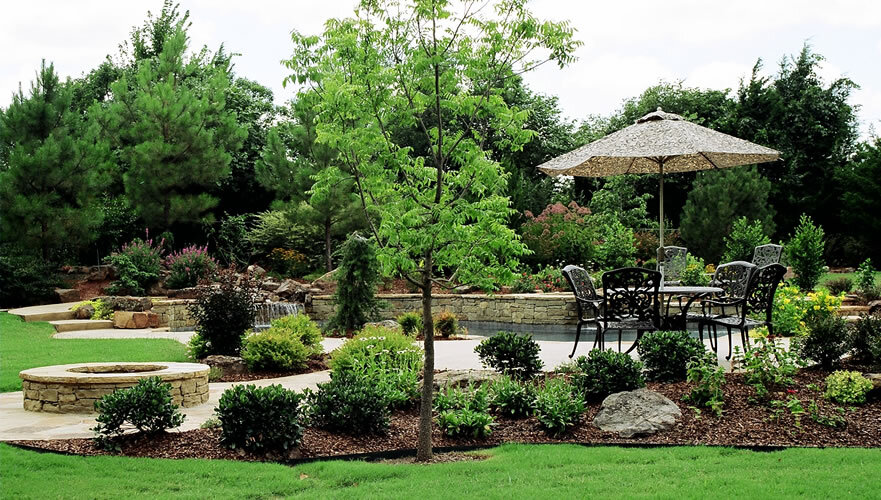Does Landscape Fabric Keep Weeds Out of My Garden?
Well, early on…the answer is yes! However, after a while, it can do more harm than good.
The most common type of landscape fabric is a non-woven textile made of plastic fibers, often black, that may be perforated with small holes. The use of landscape fabric is based on the idea that it will either physically keep weeds from growing, or that it will keep seeds in the soil from sprouting by blocking the sunlight. The fabric also cannot help with windblown seeds since those will germinate no top of the fabric.
Some homeowners use landscape fabric in the belief that it will keep the mulch from decaying so it doesn’t need to be replenished. This is simply not the case. Most mulch products are made from wood byproducts or tree bark and wood will eventually decay in the presence of moisture, with or without landscape fabric. As a matter of fact, this decay is actually one of the great benefits of mulch. As the wood breaks down into humus, it releases nutrients to enrich the soil and feeds beneficial microorganisms that are necessary for the development of healthy roots and plants. Unfortunately, landscape fabric can interfere with this process. As the mulch breaks down, the organic matter will be blocked from improving your soil by the landscape fabric. Though the fabric itself won’t rot, the decaying mulch on top makes the fabric become more visible and unsightly.
The fabric itself may lead to problems as well. It is designed to allow of both water and air to pass through it for the benefit of the plants. Often there are small perforations for this purpose. But in reality, the openings may become clogged up with soil and organic matter from the decay of the mulch. Air can’t get through and neither can rain or irrigation. With the use of landscape fabric, you could unknowingly keep your plants from getting the proper water and air they need. They may be living in drought conditions because the water can’t reach the soil and the roots.
All of this is just to say, in the long term, landscape fabric is less beneficial and more harmful to your beds. The best course of action to keep a healthy layer of mulch. We suggest about 2 inches of mulch on perennial beds and about 3 to 4 inches around trees. For most people, spreading mulch becomes part of the routine to spruce up the garden before and after growing season. Make plans to replenish mulch as it decays, but don’t let it pile up too deep. Don’t mound the mulch up against the trunks of trees or the stems of shrubs. It can trap moisture that will cause the bark to decay.
Maintaining a layer of mulch is one of the best things you can do for trees, shrubs and other plants, when applied properly.
Check out our fall and winter tips blog here.


